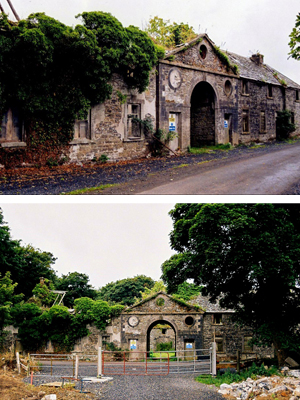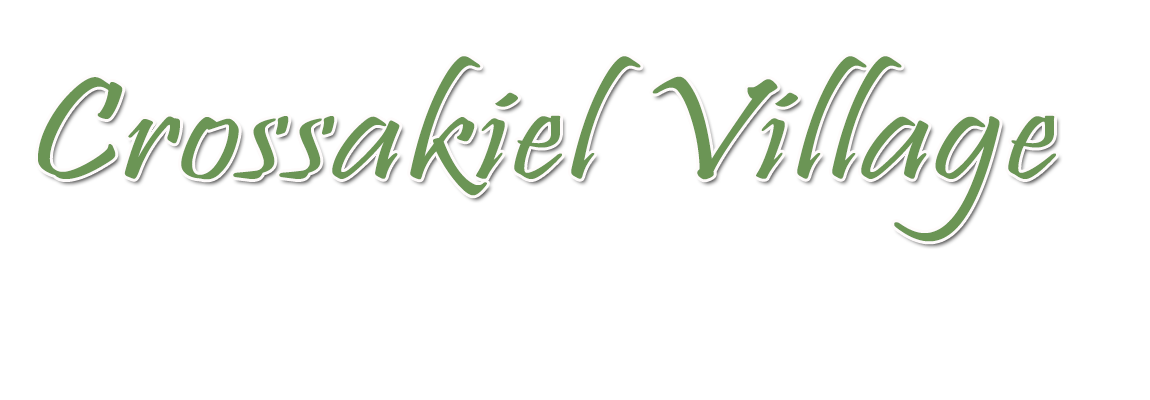The History of Clonabreany House - The Wade Family and Clonabreany
The story that is told by those who knew the Wade's house at Clonabreany in the years soon after the First World War is that, soon after the massacre at Drogheda on 11th and 12th September 1649, Cromwell surveyed the view from Crossakiel Hill towards Clonabraney. Speaking to one of his officers who had distinguished himself so shortly before, Cromwell offered him 1,000 acres of "that land". But the officer said "I would not live in an old swamp like that!". Then he spoke to a drummer boy who replied "I would be delighted to own a thousand of such land" and Cromwell said "Young Wade! I will give you 2,000 acres." And so, not long after and for the next 250 years, the Wades lived on the site previously occupied since 1190 by the Plunketts.
The story goes that having taken Drogheda, with Dundalk and Trim also under his control, Cromwell decided to harry a little of Meath and Westmeath. Lord Plunkett was watering his horse at the ford at the same time that Cromwell arrived and, seeing his reflection in the stream, Plunkett hurled his sword at the conqueror - in vain! Captured and condemned to death, Plunkett asked to die with his good sword in his hand against any two of Cromwell's officers. At this, he was pardoned. Could this have been the source of the link between Henry Wade and the Plunkett lands, and the basis for the selection of that estate for Henry? The idea that Cromwell camped on Crossakiel Hill probably resulted from that foray in 1649. 
If Henry had truly been a Puritan drummer boy at the massacre of Drogheda in 1649, we can assume he was born about 1634, probably somewhere in England which fell under Cromwell's influence rather than the King's. Perhaps his father, whomever and whatever he might have been, was drafted into the Cromwellian army so that it was natural for young Henry to follow as soon as possible - drummer boys rarely being older than their mid-teens. By 1669 therefore he would have been around 35, a respectable, albeit young age, to become High Sheriff. So from his position of High Sherriff we can assume that Henry would have approved of the restraints on Catholic freedoms which applied during Charles II reign. Were these restraints considered by him to be the lesser evil compared to his original Puritan attitudes? Or did he only serve Cromwell grudgingly as a member of his army? Fifteen years after his year as High Sheriff, on 3rd November 1684, Henry received a Patent granting him Clonabraney and 1490 acres in County Meath. This detail seems to be one of the limited number of points of agreement between Burke's Landed Gentry of Ireland and the New York Librarian, Stuart C. Wade, who wrote the history of several families of Wades and published them in 1900.
Clonabraney House was set atop a gentle rise looking South. On the front were four columns of corrugated blue stone with the outer walls of granite. Up four large steps was a spacious front patio leading to the front door of black ebony with two wrought iron foot scrapers on either side.
Inside the entrance was a large, marbled-floor hallway with a crest and the words Plunkett and Wade in mosaic. There was also a huge stone fireplace. The house was four stories high with a basement, so five stories in all. On the first floor, above the basement, was a library, smoke room and a study together with a large reception room later reduced in size to form the entrance to the new wing.
A very wide staircase led from the first to the second floor comprising the drawing room, safe room and small servants area with bathroom and cloakroom. The third and fourth floors were comprised of the bedrooms, two bathrooms and the butlers quarters, he being the only member of staff to live in the Big House proper. The new wing included a large banquet-hall-cum-ballroom, a corridor with arches to the cloak and powder rooms and others besides. Below was a basement with a large fruit store, wine cellar and vat room. In the basement of the main house was the large kitchen, a pantry, wash house, boots room and corridor, off which were six staff bedrooms. There was also a fuel supply chamber. The staff comprised the butler and eight servants.
At the rear to the house were five flights of stairs up to the roof which provided a splendid view of the local foxhounds.
There were two entrances. The main one past the lodge which is still there and the other connected to the main avenue and farmyard. In the farmyard were twelve horse stables, a harness room, coach sheds and cow houses together with a stewards house, other workers living quarters and even a forge at the entrance through the archway. The farmyard had a steward, a groom and ten farm-hands.
The house overlooked the pond, which was full of water lillies, and two prominent, dropping ash trees. The extensive gardens, as well as containing sufficient produce to supply the house all year round and leave extra for export, also included well kept grounds with flowers, trees and shrubs of every kind and hue. Much of the grounds were covered with rhodadendrums of all colours, surrounded by a huge wooded area. It was a truly magnificent place.
To find out more, please visit www.clonabreanyhouse.ie
Download or view a visual directions map to finding Clonbreany house Visual Map PDF

